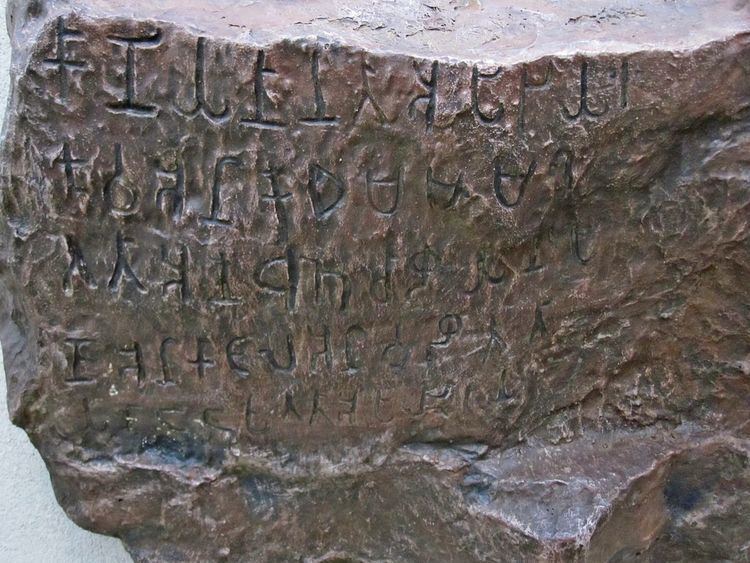ISO 639-3 oty | Linguist list oty Old Tamil | |
 | ||
Region Tamiḻakam, Ancient India Era Developed into Middle Tamil by the 8th century Language family Dravidian
Southern
Tamil–Kannada
Tamil–Kodagu
Tamil–Malayalam
Tamil languages
Old Tamil Writing system Tamil-Brahmi, later Vaṭṭeḻuttu and the Pallava alphabet | ||
Old Tamil is the period of the Tamil language spanning the 3rd century BC to the 8th century AD.
The earliest records in Old Tamil are short inscriptions from between the 3rd and 2nd century BC in caves and on pottery. It has a history spanning atleast 3000 years. These inscriptions are written in a variant of the Brahmi script called Tamil Brahmi. The earliest long text in Old Tamil is the Tolkāppiyam, an early work on Tamil grammar and poetics, whose oldest layers could be as old as the 1st century BC. A large number of literary works in Old Tamil have also survived. These include a corpus of 2,381 poems collectively known as Sangam literature. These poems are usually dated to between the 1st and 5th centuries AD, which makes them the oldest extant body of secular literature in India. Other literary works in Old Tamil include Thirukural, Silappatikaram and Maṇimēkalai, and a number of ethical and didactic texts, written between the 5th and 8th centuries.
Old Tamil preserved many features of Proto-Dravidian, including the inventory of consonants, the syllable structure, and various grammatical features. Amongst these was the absence of a distinct present tense – like Proto-Dravidian, Old Tamil only had two tenses, the past and the "non-past". Old Tamil verbs also had a distinct negative conjugation (e.g. kāṇēṉ (காணேன்) "I do not see", kāṇōm (காணோம் "we do not see") Nouns could take pronominal suffixes like verbs to express ideas: e.g. peṇṭirēm (பெண்டிரேம்) "we are women" formed from peṇṭir (பெண்டிர்) "women" and the first person plural marker -ēm (ஏம்).
Despite the significant amount of grammatical and syntactical change between Old, Middle and Modern Tamil, Tamil demonstrates grammatical continuity across these stages: many characteristics of the later stages of the language have their roots in features of Old Tamil.
